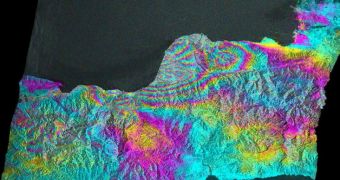In a new scientific study, researchers have determine the existence of an underground fault line near Haiti, which may have been primarily responsible for the January 12 earthquake that struck the nation.
The international team that conducted the new investigation says that the subsurface fault was not known before the study, and experts add that they were surprised to see it rupture.
When they analyzed the data collected during this research, all experts expected to see signs that the main fault line in the area, called Enriquillo, had ruptured.
While they did find some signs of movement in these landscape features, the scientists were unable to demonstrate that it was rupture in this fault line that caused the magnitude 7 tremor.
In a paper published in this week's online issue of the esteemed scientific journal Nature Geoscience, the research group suggests that not all tension in the Haiti-area fault line system has yet been released.
According to the United States Geological Survey (USGS), this translates into a high risk of the region being hit by swarms of tremors, or even large earthquakes, in the coming months or years.
Predicting exactly when the next quakes will hit is close to impossible, the team says, especially since they don't yet apparently know the entire area as well as they thought they did.
Discovering new fault lines in an established system can change the dynamics of the entire area, and could yield entirely different results in a computer model.
Even if experts had made predictions as to when the next big tremor would strike, the discovery of the new subsurface fault means that they would have had to recalculate their theories.
“I was surprised when I saw the satellite data showed the Haiti earthquake must have ruptured a different fault than the major Enriquillo fault, which everybody expected was the source,” says Eric Fielding.
“Without the radar images, we might still be wondering what happened,” adds the expert, who is a geophysicist at the NASA Jet Propulsion Laboratory (JPL), in Pasadena, California.
The expert was in charge of processing Japan Aerospace Exploration Agency (JAXA) satellite synthetic aperture radar interferometry data for the new research.
The collaboration that led the work included scientists from the USGS, the California Institute of Technology, the University of Texas in Austin, and the Nagoya University, in Japan.
Data collected by the Uninhabited Aerial Vehicle Synthetic Aperture Radar (UAVSAR) airborne instrument were also used for the research. The tool was built by the JPL, a division of Caltech.

 14 DAY TRIAL //
14 DAY TRIAL //